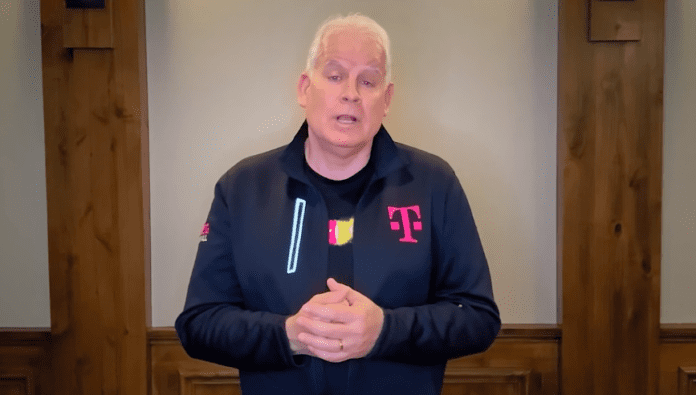A year ago at Connect(X), T-Mobile US executives were celebrating the fact that the Federal Communications Commission was on a path to approve the carrier’s merger with Sprint. CTO Neville Ray gave a keynote address at the event in Orlando, Florida.
A year later, after a court battle with state attorneys general who opposed the merger, Ray spoke again. The Sprint transaction has closed. The network integration work has begun. And due to the ongoing novel coronavirus pandemic, Ray was speaking from his home in Redmond, Washington, as part of Connect(X)’s virtual conference event.
“In the past, you had to make a choice — do I buy for value or do I pay more and get a better network? With the New T-Mobile, that compromise of a decision will be gone for good,” Ray said, encapsulating T-Mobile’s strategy going forward.
He emphasized the carrier’s now-vast spectrum holdings: control of 319 megahertz of sub-6 GHz low- and mid-band spectrum (nearly double AT&T’s holdings in those bands and nearly triple Verizon’s, according to Ray) and more than 1,100 megahertz of millimeter wave spectrum (more than AT&T, he said).
“We’re ready to leapfrog the carriers and their network capability,” Ray said. Currently, he said, T-Mobile US’ 600 MHz-based 5G covers “effectively two-thirds of the American population,” and the carrier will continue to add “thousands of sites” across the country to expand coverage, capacity and performance of its 600 MHz layer. In addition, T-Mo is now adding “material spectrum depth” in the mid-band, relying on its more than 150 megahertz of 2.5 GHz and more than 100 meg of PCS and AWS spectrum. He said that T-Mobile US began working on permitting for site work last year, with work to be done after the close of the merger, and started on the very day that the transaction closed.
“Performance is exciting and super good,” Ray said. “We’re already seeing peak 5G speeds of over 600 Mbps in our testing, and we’re only using a fraction of the mid-band spectrum that we control.”
“This is … just the start of a major program of work over the coming months,” he said, adding that 2.5 GHz will be added to thousands of sites in major metro areas this year and continue at a “furious pace” into 2021.
In a Q&A chat accompanying Ray’s address, he said that T-Mobile “will ultimately deploy the lion’s share of the 2.5 GHz spectrum for 5G” but is starting with about 60 megahertz. The carrier is seeing “limited impact” on build-out progress from the coronavirus pandemic, he reported. And while Ray has shared concerns about the challenges of dynamic spectrum sharing and criticized competitors’ plans to use DSS to launch nationwide 5G, he said that “DSS [is] coming from T-Mobile,” although there is “still work ahead on [software] and testing. Thankfully we did not need DSS to launch nationwide 5G!!”

